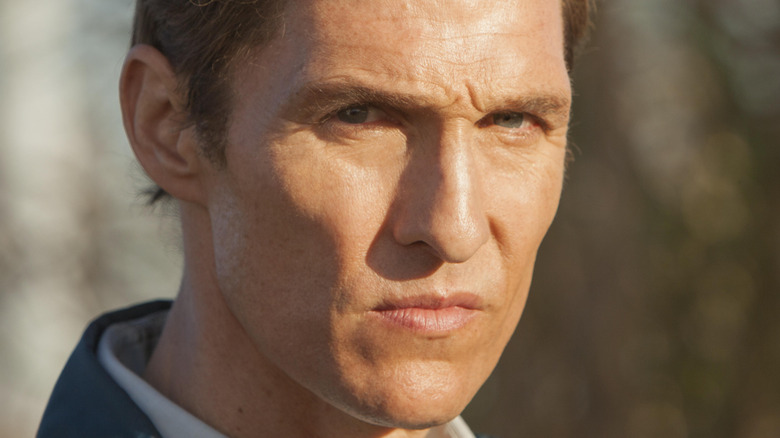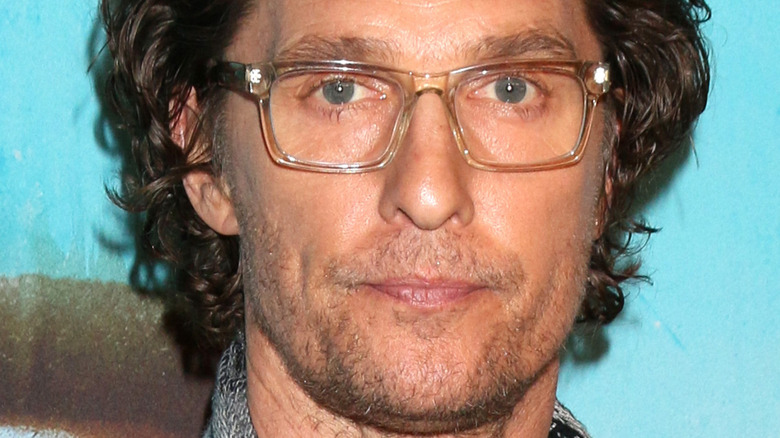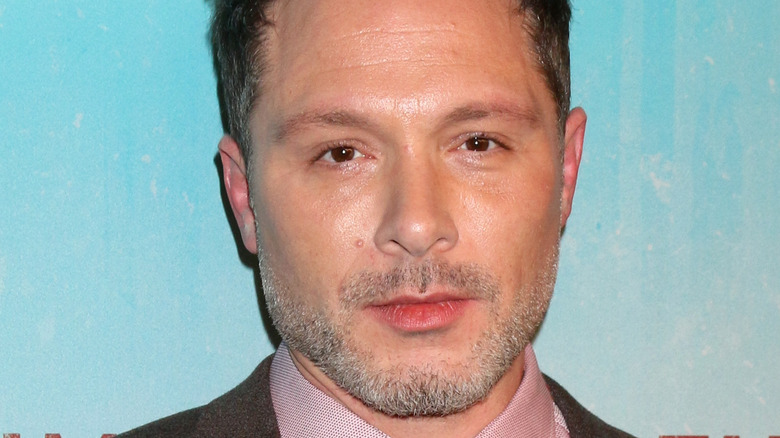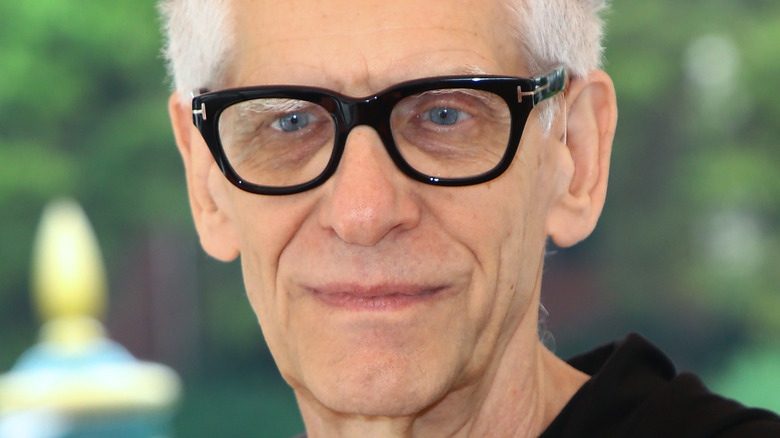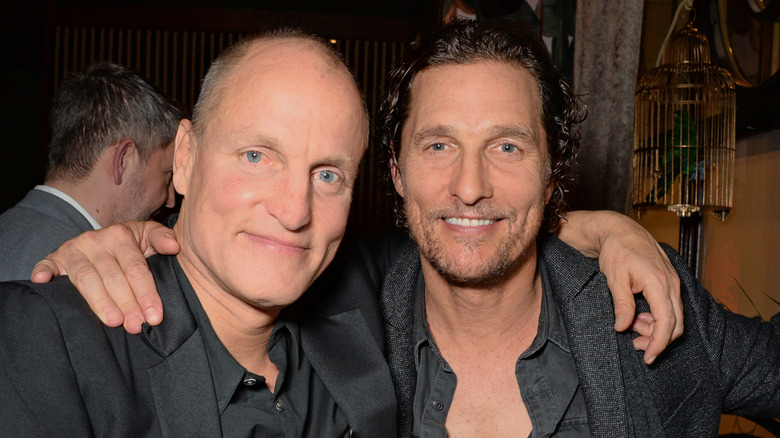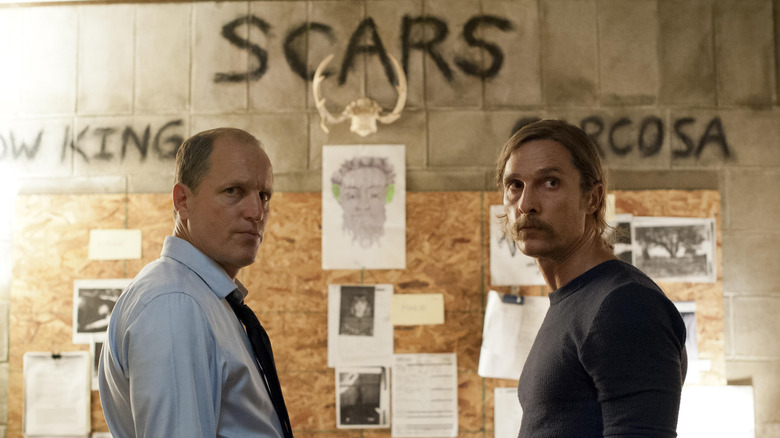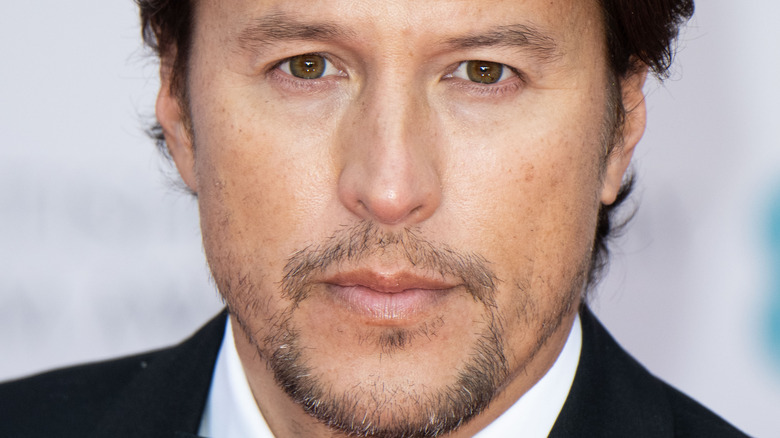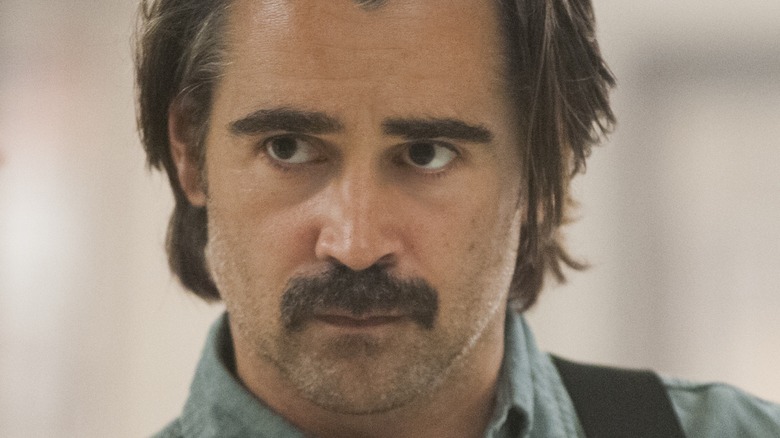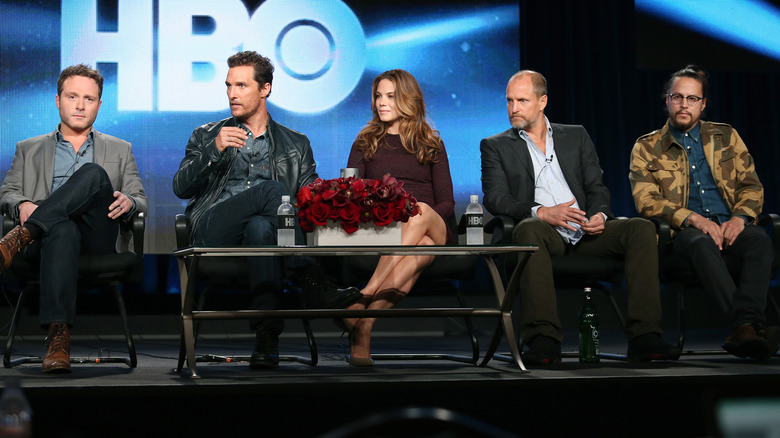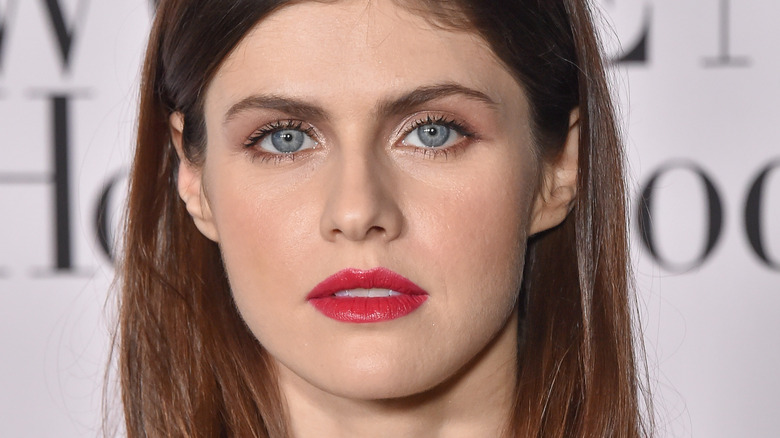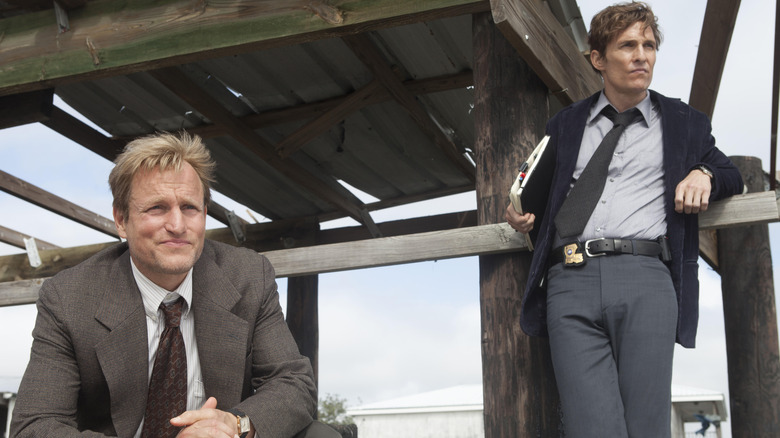Facts Only Huge True Detective Fans Know About The Show
"Time is a flat circle," which means it's once again time to talk about everyone's favorite true crime anthology series: "True Detective." From the mind of Nic Pizzolatto came a television series dedicated to mystery, intrigue, darkness, and the occult as the law clashes with forces seemingly beyond their scope.
Having begun with a standout, critically acclaimed, and almost universally beloved first season starring Woody Harrelson and Matthew McConaughey in the roles of grizzled homicide detectives, the series went on to spawn three impressive seasons, with a fourth on the way. The story of Marty Hart and Rust Cohle peeling back the layers of conspiracy surrounding a gruesome ritualistic murder left audiences desperate for more. The second and third seasons had different stars and settings, morphing the HBO show into an anthology like "American Horror Story" or "Fargo."
According to Rotten Tomatoes, "True Detective" boasts an 87% critic score and a staggering 99% audience score, reflecting the loyal fan base the show has gained. The show has collected multiple awards over the years, including five Emmys, one BAFTA, one Critics' Choice Television award, and multiple nominations beyond that. With the news of Jodie Foster and Kali Reis being cast as the two leads for an upcoming fourth season, it's the perfect time to dive into the details of the show and find out everything you might not know about "True Detective."
Matthew McConaughey wrote a 450-page character analysis
As one of the two leading stars and executive producers of "True Detective" Season 1, Matthew McConaughey took his role seriously. He was cast for the show in the early stages of what was eventually called "The McConaissance," or his career revival from low-budget romcoms to prestige dramas and award-winning films. Following his powerful performance in 2011's "The Lincoln Lawyer," Nic Pizzolatto saw the potential for his involvement in the series alongside Woody Harrelson and Michelle Monaghan.
Rustin Cohle is an extremely complex character who, if portrayed improperly, could easily alienate an audience with his nihilism and apathy. It was essential for McConaughey to fully embody the deep pain of this character, which he did by extensively analyzing Rust Cohle's identity on a fundamental level. According to an interview with Rolling Stone back in 2014, McConaughey detailed how he felt the need to create a text to chart his character's life and growth over the 17 years the show follows. He broke Rust Cohle's essence down into four stages: "1995 Cohle," "Crash," "2002 Cohle," and "2012 Cohle," each with its own lengthy analysis of the character's state of mind. The result was a 450-page graph titled "Four Stages of Rustin Cohle," which seems to have aided McConaughey's ability to embody the role.
The series was always meant to be an anthology
When it comes to television development, many shows don't have multi-season arcs planned out from the very beginning and, as a result, lose direction. "True Detective" didn't have that problem, as Nic Pizzolatto always knew the show would be a full-fledged anthology with new casts and stories every season. According to The Hollywood Reporter, back in 2012 — before the first season's production was complete — the show was intended to refresh every year in the style of predecessors like Ryan Murphy and Brad Falchuk's FX series "American Horror Story."
The strength of an anthology format is that it allows creators to explore vastly different stories while maintaining an overarching theme and tone. Nic Pizzolatto developed the show with that in mind, allowing the story of Season 1 to fully conclude by the last episode without needing to drag it out into the next season. While the characters and setting changed, subsequent seasons follow the same basic format: two detectives investigating crimes that lead to the discovery of some wider conspiracy or mystery. The second season cast Collin Farrell and Rachel McAdams as their duo (with a notable performance from Vince Vaughn as a career criminal), while the third season had Mahershala Ali and Stephen Dorff. Interestingly, in an interview with Entertainment Weekly, Pizzolatto revealed that he initially began writing the story that eventually became Season 3 as a new project, only to realize that the themes fit with "True Detective."
Some fans missed the chemistry between Harrelson and McConaughey, and neither Season 2 didn't receive as warm a critical reception as the first (per Rotten Tomatoes) — although Season 3 was something of a return to grace. No matter how each season fares on its own merits, the deliberate variation provides fresh interest while preserving Pizzolatto's signature dark, atmospheric style.
David Cronenberg could have directed an episode
It hasn't always been smooth sailing for "True Detective," unfortunately. While the first season was hailed as a towering achievement of episodic television, the second season (and to a lesser extent the third) struggled to live up to the hype that followed. One of the more troubling developments for the show during production of the second season was the challenge of finding directors after the departure of Cary Joji Fukunaga, who helmed the entirety of the first season. The hole left by this change caused HBO and Nic Pizzolatto to search for talented artists to direct singular episodes throughout the season, as opposed to one director for the entire project.
Season 2 ended up splitting the load between six different directors: Justin Lin, Janus Metz Pedersen, Jeremy Podeswa, John Crowley, Daniel Attias, and Miguel Sapochnik (now known for his work on "Game of Thrones" and "House of the Dragon"). Some even bigger names were approached early on but, for one reason or another, declined the offer. The biggest of these filmmakers was horror icon David Cronenberg, best known for creating classic films such as "Scanners," "The Fly," "Videodrome," and "Crash." According to Vulture, Cronenberg was approached to direct an episode of "True Detective" but refused because he didn't like the script. He said, "The heat is in TV. Last year I was approached to direct the first episode of the second season of 'True Detective,' I considered it but I thought that the script was bad, so I didn't do it. In TV, the director is just a traffic cop, but on the other hand it is work and there's a lot of it."
McConaughey and Woody Harrelson are friends in real life
What began as a working relationship between two actors has apparently grown over the years into a deeply genuine friendship between Matthew McConaughey and Woody Harrelson. The two were both lead actors and executive producers for "True Detective," playing two diametrically opposed partners who slowly grew to understand, respect, and even like each other as the story unfolded. This combative relationship between Rust Cohle and Marty Hart was apparently difficult for them to find when filming began because of their pre-established friendliness toward each other.
"True Detective" was not the first time these two actors had worked together, sharing screen time in 1999's "EDtv" and 2008's "Surfer, Dude," which were both lighthearted comedies. This cemented their appreciation for each other and sowed the seeds of their off-screen friendship. According to USA Today, McConaughey and Harrelson had to focus on breaking their pre-established dynamic so that the characters could be appropriately hostile to one another. Harrelson said, "Not being on the same wavelength aided what it was we were doing, but it was also uncomfortable."
Nic Pizzolatto drew inspiration from The King in Yellow
If you've seen "True Detective," you know it doesn't shy away from the grimmest aspects of true crime. Every season has an underlying theme of almost otherworldly evil that the characters uncover in their investigations. Season 1, in particular, heavily references aspects of an occult conspiracy behind the murders at the show's center. To create the eerie atmosphere and plot, creator Nic Pizzolatto directly referenced the work of horror author Robert W. Chambers and his book, "The King in Yellow."
Fans of "True Detective" will definitely recognize some key terms and phrases peppered throughout the first season that actually come directly from this relatively obscure piece of 19th-century supernatural horror. The unknown killer Rust and Marty are hunting is often called the "Yellow King," who lives in a dark place called "Carcosa." These are terms directly from the novel about an evil entity called "The King in Yellow," as well as a lost city called Carcosa (itself borrowed from an even older short story by Ambrose Bierce). Chambers was a strong admirer of H.P. Lovecraft, so his work was infused with a similar sense of cosmic horror and dread, which in turn inspired Pizzolatto in his development of "True Detective."
In an interview with EW, Pizzolatto directly addressed where the horror elements of Chambers' book fit into his writing process. He said, "So it made sense — to me, at least — to allude to an external narrative that is supposed to create insanity, or as I prefer, deranged enlightenment. When I did that, a kind of secondary language began to form in the scripts, where the notion of cosmic horror became a very real part of the environment, at least for those who know Chambers' work."
Only Season 1 used film
While most television shows and movies are filmed and presented digitally these days, some notable exceptions opt for old-fashioned film. Quentin Tarantino, Martin Scorsese, and Christopher Nolan are all auteurs who eschew digital in favor of film. According to an interview with Nolerg, Tarantino said, "If you're not doing the work to get a great shot, then what's the point? Digital cinematography puts all the heavy work in the post-production rather than planning and attempting to get the perfect shot while on set."
Director Cary Joji Fukunaga and cinematographer Adam Arkapaw chose to use film for the first season of "True Detective." All eight episodes of Season 1 were shot on 35mm film, which made it much more difficult to get some of the more complex shots in the show. During an interview with Variety, Adam Arkapaw touched on the challenge of filming a show this way. He said, "In a film, you might be accustomed to shooting two to three minutes of screen time a day. On 'True Detective,' we were shooting five to six minutes every day. Basically, your time to devise, prepare and execute your work is cut in half." It was worth it, though; Season 1's visual richness is a big part of its appeal. Sadly, subsequent seasons were not so lucky (via PremiumBeat).
Colin Farrell physically changed to play Ray
The second season of "True Detective" brought in an entirely new cast of characters in a completely different location, with mixed results. While critics didn't seem to appreciate the decline in writing and story, they acknowledged the strong leading performances across the board. They included Rachel McAdams as Antigone "Ani" Bezzerides, Vince Vaughn as Frank Semyon, and Taylor Kitsch as Paul Woodrugh, all various cops and crooks operating in Los Angeles. But the actor who made the most waves was Colin Farrell as Ray Velcoro, a dirty cop torn between his desire to do the right thing and his criminal loyalties.
Colin Farrell is an Irish actor known for his parts in movies like "In Bruges," "Horrible Bosses," "Fantastic Beasts and Where to Find Them," and "The Batman." He often plays comedic, charming rogues. After being cast as Detective Ray Velcoro — an alcoholic, deadbeat cop with nothing to lose — Farrell needed to change his body to match. According to ET, the actor gained roughly 20 pounds prior to filming and hated every second of it. Farrell said, "People think it must be fun to eat what you want — and it is, for the first day," then added, "Day two, when you're already on your second cheeseburger and fries with a chocolate shake by 11 a.m., not so much." Along with his physical form, Farrell also changed his look in ways that turned heads when the season was released by sporting an impressive mustache.
Cary Joji Fukunaga and Pizzolatto butted heads
Given the success of Season 1 of "True Detective," you might think that Nic Pizzolatto's writing and Cary Fukunaga's directing were a match made in heaven, but apparently the two did not get along during production. In the past few years, Fukunaga has gone on record explaining how the working partnership between him and Pizzolatto deteriorated as the show went on.
During an interview with The Hollywood Reporter, he said, "The writer and director are a team. Over the course of the project, Nic kept positioning himself as if he was my boss and I was like, 'But you're not my boss. We're partners. We collaborate.' By the time they got to postproduction, people like [former HBO programming president] Michael Lombardo were giving Nic more power. It was disheartening because it didn't feel like the partnership was fair." It seems that this tension was one of the reasons Fukunaga did not return for seasons two or three of "True Detective," although he did remain in an executive producer role.
Alexandra Daddario felt challenged
One of the unsung heroes of "True Detective" is actress Alexandra Daddario as Lisa Tragnetti, a secretary working at the Louisiana State Police department and Marty Hart's mistress in 1995. She plays a significant role in the deteriorating marriage between Marty and his wife, Maggie, as their secret affair becomes increasingly toxic as time goes on. Daddario brings genuine empathy, complexity, and depth to a character who easily could have been written off as one-note in the hands of another performer. However, her character was highly sexualized, which apparently led to Daddario feeling nervous about her first-ever nude scene for the show.
According to a 2014 interview with MTV, the "Baywatch" actress detailed just how difficult it was to prepare herself for what the role would require her to do. She said, "I really wanted to be part of the show, and I understood why the nudity and all of that was required of the character.... The character is really different from anything that I've done before. The nudity was just part of that." Fortunately, Daddario went on to say that the cast and crew helped put her at ease. In particular, she mentioned that scene partner Woody Harrelson made the whole interaction very comfortable for her.
McConaughey was supposed to play Marty
Although it's hard to imagine Rust Cohle played by anyone else, it turns out that the casting was originally going to be flipped, with Matthew McConaughey slated to be Marty instead. McConaughey had mainly been known for his comedic roles, going all the way back to one of his first big-screen appearances in Richard Linklater's "Dazed and Confused" as David Wooderson. While he'd branched out with more serious roles like "The Lincoln Lawyer," he was still seen as a jovial performer who would fit well into the more light-hearted role of Marty Hart.
During an interview with WNYC in 2014, McConaughey talked about his experience being brought in by HBO to read for Marty. While he was intrigued by the show, it was actually Rust Cohle's dialogue that piqued his interest. He said, "The guy I can't wait to hear what comes out of his mouth every time I turn the page is this guy Rustin Cohle." Once McConaughey realized how badly he wanted to play Rust instead of Marty, he apparently laid it down to the showrunners, saying, "I read the first two episodes and said, 'Look, I like the role of Cohle. If you guys are interested in me for the role, I'm in.'" He was right, considering his highly watchable performance in "True Detective" has since received immense praise and numerous award nominations.
